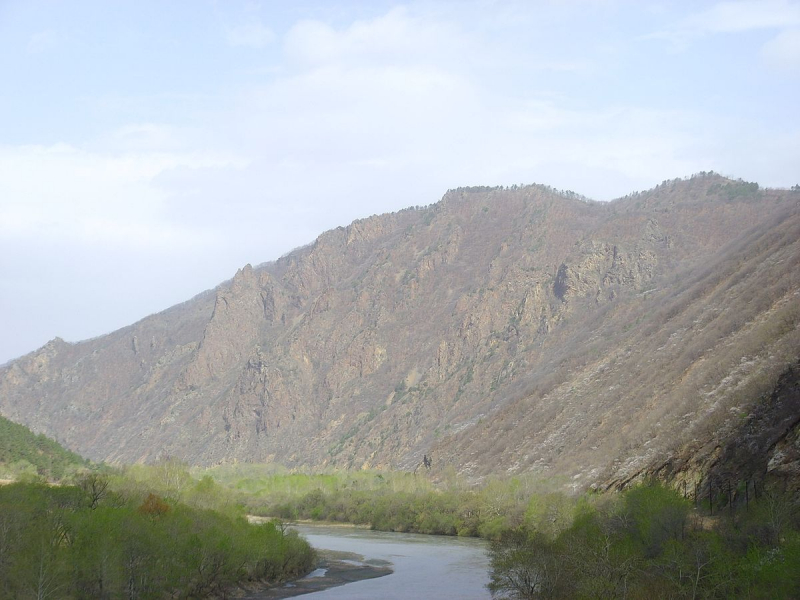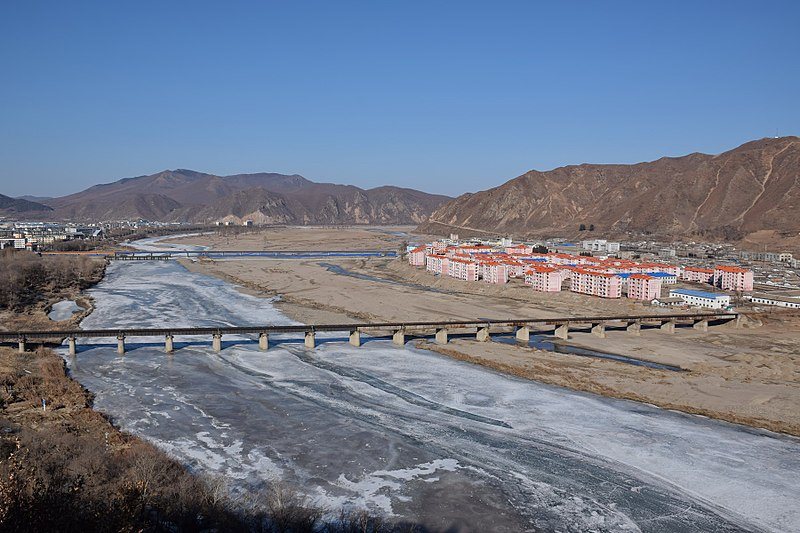Tumen

The Tumen River, also known as the Tuman River or the Dooman River, is a 521-kilometer (324-mile) long river that flows through China, North Korea, and Russia, rising on the slopes of Mount Paektu and into the Sea of Japan. The river has a 33,800 km2 drainage basin (13,050 sq mi) and is one of the longest rivers in North Korea.
The river runs through northeast Asia, passing through China and North Korea in its upper reaches and into Russia in its final 17 kilometers (11 miles) before entering the Sea of Japan. The river forms much of Jilin Province's southern border in Northeast China, as well as North Korea's North Hamgyong and Ryanggang provinces' northern borders. The river, as well as the Amnok River, commonly known as the Yalu River, originates on the Chinese-North Korean border in Baekdu Mountain (which forms the western portion of the border of North Korea and China).
The Mongolian term tümen, which means "ten thousand" or "a myriad," is the source of the river's name. This river is heavily polluted by North Korean and Chinese companies nearby, but it is nevertheless a popular tourist destination in the area. A riverfront promenade in Tumen, Jilin, features eateries where patrons can gaze across the river towards North Korea. Tumannaya is the Russian name for the river, which literally means cloudy.
Between the villages of Wonjong (Hunchun) and Quanhe, the Japanese erected the Tumen River Bridge in 1938, where the Quan River joins the Tumen River. Hoeryong and Onsong in North Korea, as well as Tumen and Nanping in China's Jilin province, are important cities and towns along the river. Three agreements were signed in 1995 by the People's Republic of China, Mongolia, Russia, North Korea, and South Korea to establish the Tumen River Economic Development Area.
Length: 17 kilometers (11 miles)






